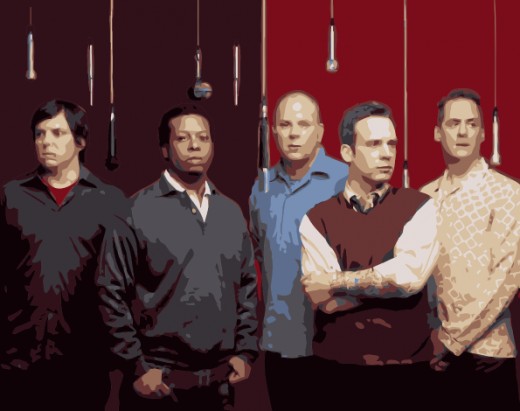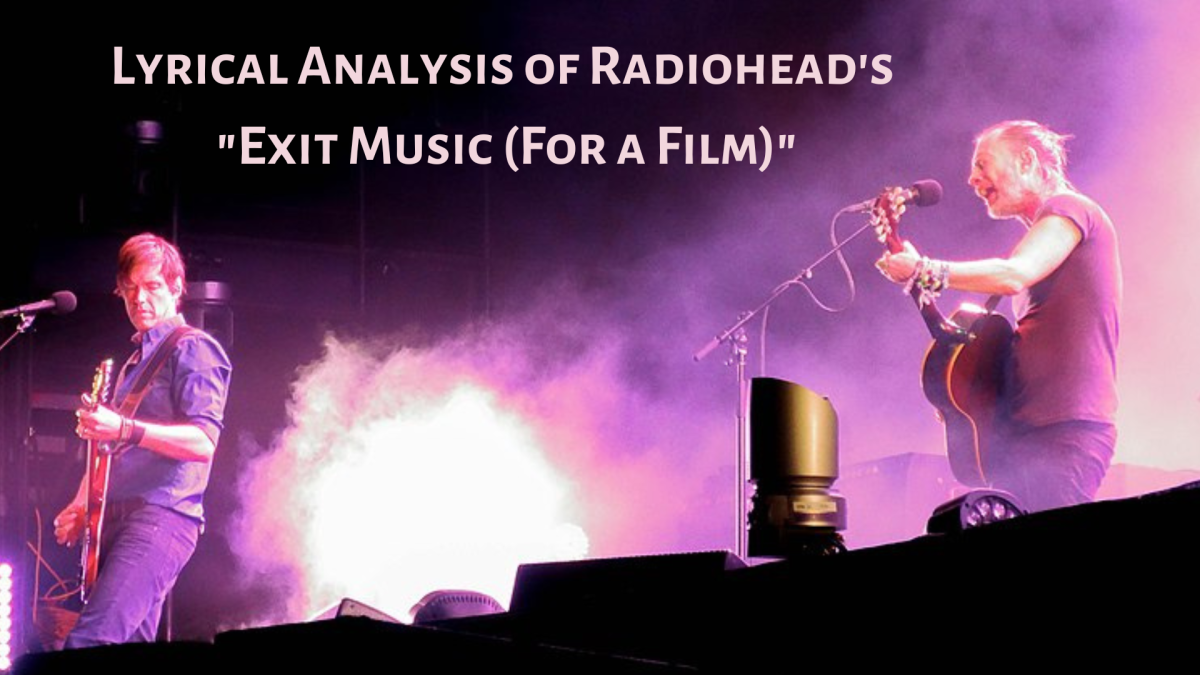90s Indie Rock Bands and Albums: Tortoise and the Post-Rock Sound
What is Post Rock anyway?
If you aren't familiar with Tortoise, the first question you probably have after reading this hub is "What on earth is post-rock?" Let me start by stating that the answer to that question depends on who you are asking. This writer, for example, will attempt to answer that question most directly by offering the following definition:
Post-Rock: That particular type of underground rock that began in the 1990s in between Louisville, Kentucky, and eventually, Chicago Illinois. It is a type of music informed by not only jazz and rock, but also electronic sound scapes ranging from Kraftwerk to Brian Eno. The resulting sound is a surprisingly organic mix of funk, jazz, rock, and techno marked by its lack of vocals, inventive, yet repetitive, loops, and a jazz aesthetic infused with a playfulness of appreciation for groove born of rock and roll. This sound can best be understood by the band whose sound necessitated the genre: Tortoise.
Rather than expound upon these remarks as many would in an attempt to convey a sound with words, Here are some links to songs by artists considered post-rock besides Tortoise to help you situate them in the context of their contemporaries. It should be noted that many of the musicians and producers for the different bands in this genre are one and the same as they all have collaborated with one another.
Check out another Post-Rock act, Isotope 217. They are a little more jazz oriented than Tortoise.
A Brief Introduction to Post Rock
- All Music's Article on Post-Rock
All Music actually has all kinds of links to songs you can hear by bands. Check this link out first to have some music playing as you check the other sites out. But first, check out the music and info on the Tortoise article on this page! :) - List of post-rock bands - Wikipedia, the free encyclopedia
No one agrees with everything on Wickipedia. I don't agree with the inclusion of every band on this list, but it's a good starting point, so I include it to help you learn what others think of Post-Rock, a prerequisite to knowing what you think. - Thrill Jockey Records
Thrill Jockey Records is the label for more Post Rock acts than almost any other label. Tortoise, as well as many other greats, are on this label. If you want to know more about Post-Rock, this is a great resource for you! - 90s Indie Rock Bands and Albums: The Best Band You've Never Heard? Slint.
Not only did Dave Pajo of Slint play with Tortoise on two of their best albums, but many cite the band as one of the largest "Rock" influences on Tortoise. This article examines the band and has links to songs, videos, etc.

A Digest Compendium of the Tortoise's World
Throughout the years, Tortoise has had a few different line ups. Their current line up includes: Dan Bitney, Doug McCombs, Jeff Parker, John Herndon, and John McEntire. In the past, both Bundy K. Brown and David Pajo have been in the band.
The band has released 6 studio albums as well as several remixes and compilations with other artists over the course of the past 16 years. The two most significant of these compilations are 1999's "In The Fishtank" which was a collaboration with The Ex, and 2006's "The Brave and the Bold" with "Bonnie 'Prince' Billy" a.k.a. Will Oldham. Their first album was, perhaps, their most Rock and Roll of any album, but there is no clear progression from one place to another in their music. Rather, each album seems to come from a different, yet similar place. The guiding principal for creation seems to be the types of instruments and voices being used in connection with the loops and percussive samples that serve as the backbone for their songs.
While it is true that you cannot trace a clear path from organic to electronic music in Tortoise's career, it is almost true that as their career progressed, the layering in their songs began to take on greater significance and the builds and structures of tensions they use in later albums are greatly embellished from earlier works. Where the first album might content itself to build tension with a bass part and one soft percussive lines, later albums find multiple voices exchanging rounds on tension building progressions and beats. This complexity is subtly worked in creating very dense textures in their later works that follow similar, if different realized, patterns in their earlier works.
The last effect of this band is not only that there now exists a new genre of music populated with serious musicians influenced by many diverse styles, but Tortoise has also move mainstream music a step in the direction of intellectualism. This is effective because on of Tortoise's strengths has always been their balance between "Music for your head" and "Music for your feet". Perhaps no other band exemplifies a more harmonic balance of the cerebral and visceral components of music.
For a further discussion, let's turn to their albums.
Get Your Own Copy of Tortoise's Debut Album
A Great Tortoise Track off their First Album Named After the Great "Ry Cooder"
1994's S/T Debut
Tracklist:
- "Magnet Pulls Through" – 4:37
- "Night Air" – 3:50
- "Ry Cooder" – 7:04
- "Onions Wrapped in Rubber" – 6:40
- "Tin Cans & Twine" – 4:20
- "Spiderwebbed" – 8:33
- "His Second Story Island" – 2:41
- "On Noble" – 4:05
- "Flyrod" – 3:29
- "Cornpone Brunch" – 4:44
Tortoise released its first album by Tortoise. It was released on the Thrill Jockey Record Label. It was dedicated to the memory of Michael F Cergizan, who was a member of Doug McComb's and John Herndon's band "Simple" back in 1998.
More so than any of the other albums in Tortoise's discography, this album focuses on a more rock sounding drum and bass than later albums. Certainly these songs are also very jazzy, but many of the most intense moments on the first album are noted by an intensity more associated with rock than jazz or electronic music. One of the absolutely greatest parts of was its use of dynamics. For example, the first song, "Magnet Pulls Through Air" builds slowly from a very quiet beginning, only to break out into a musical phrases that almost shock the listener out of the lull the song had been pulling them into. This burst of sound and energy is not unlike the moment in magnetic attraction where the forces suddenly explode and one magnet jumps through the air to touch the other one. This, playing with the users expectation within the song elevates the groove above the simplistic elements that make it up. The synergy from this is infectious. By the time tracks like "Ry Cooder" and "Tin Cans and Twine" hit, you are already used to the presentation so that the quiet and slow moments are almost as enjoyable, if not more so, than the louder moments that first grab your attention.
Subsequent listenings to this album have revealed it to also be an album full of controlled emotion. The depth in the simple "His Second Story Island" or uplifting air of "Cornpone Brunch" are just two examples of the viscerally appealing elements of this album. This is why the album was so successful and carved a niche out for Tortoise: for every moment of sublime cerebral appreciation of the art of the album, there are other moments where you just want to close your eyes, slip into the song, and quit thinking.
Like minimalist composer Steven Reich, tortoise has found a seemingly mathematical approach to composition that is greater than the mathematical sum of those parts. The idea of sublimity abounds on this album, from the quiet moments of introspection, to the driving riffs of the loud moments, to the careful adherence to form and repetition, this album makes more out of less than almost any other example available to us in 90s Indie Rock.
Get Your Own Copy of the 1996 album, "Millions Now Living will Never Die"
Check out a live performance from "Along the Banks of Rivers" from "Millions Now Living..."
1996's "Millions Now Living Will Never Die"
Track List:
- "Djed" – 20:57
- "Glass Museum" – 5:27
- "A Survey" – 2:52
- "The Taut and Tame" – 5:01
- "Dear Grandma and Grandpa" – 2:49
- "Along the Banks of Rivers" – 5:50
- "Gamera" (bonus track) – 11:55
- "Goriri" (bonus track) – 6:39
- "Restless Waters" (bonus track) – 3:41
- "A Grape Dope" (bonus track) - 4:12
*Note: The American version of the album only had the first 6 songs of the album, and is the version most older fans are familiar with. Today, it's easy to get the longer versions, so I recommend doing so as the other four tracks may not be the best, but are definitely worth the extra investment.
A few things had changed when Tortoise got back together in 1996 to record "Millions Now Living Will Never Die". It is renowned in many circles as one of the most ground-breaking albums in Post-Rock. It was this album that attracted the attention of the critics and earned them the title of "godfathers of American 'post-rock' movement" according to Outersound.com.
The title, which is unusual in itself, is a paraphrase of a saying common in the Jehovah's Witness faith. It was also the title of an essay by Joseph Franklin Rutherford, who was the second president of the Watchtower Tract Society.
Sonically speaking, the album starts with "Djed" which has forever since been considered the definitive Post-Rock song. It is a 21 minute epic that covers about every idea anyone has used before or after in Post-Rock. The song moves from sound scapes, to percussion instruments, to electronic sounds, all while building and deconstructing different loops in a mathematical fashion that reveals an experience, as we've discusses already, that is more sublime than the elements used to create it. There is nothing I can write about the song to do justice to actually hearing it. It is that big.
The rest of the album takes its queue from the massive first track (Which is the entire first half of the LP). Filling in the gaps left from "Djed", rather than concerning itself with the tasks, issues, and sonic landscapes of the last album, Millions Now Living Will Never Die ends up feeling like a B-side to its first track. There are, however, stand out tracks that can make you want to close your eyes and slip away. My personal favorites are "Along the Banks of Rivers" and "Dear Grandma and Grandpa". Not only are both songs great, but the way they flow from one to another gives the album a great since of finality. I know that subsequent releases have extended this release, and I am glad for this, but the original two song ending to the album left me feeling so complete as it resolved that I feel it was a complete musical statement.
This album also marks the first album Dave Pajo, of Slint, joined the band. Perhaps his influence, for his band released a 6 song epic album, played a part in the shorter album. I know he definitely added more guitar parts than the first album had, though his guitar work is really best showcased on the band's third album, TNT.
Overall, Millions Now Living Will Never Die has the best Tortoise track, but for consistency, duration, and diversity, 1998's TNT is a superior album, in my mind. So, let's look to it next.
Get Their Third Album, "TNT"
"Jetty" from the album TNT
1998's "TNT"
Track List:
- "TNT" – 7:33
- "Swung from the Gutters" – 5:52
- "Ten-Day Interval" – 4:44
- "I Set My Face to the Hillside" – 6:08
- "The Equator" – 3:42
- "A Simple Way to Go Faster Than Light That Does Not Work" – 3:33
- "The Suspension Bridge at Iguazú Falls" – 5:38
- "Four-Day Interval" – 4:45
- "In Sarah, Mencken, Christ, and Beethoven There Were Women and Men" – 7:29
- "Almost Always is Nearly Enough" – 2:42
- "Jetty" – 8:21
- "Everglade" – 4:21
Tortoise is a band that, in ways, reinvents itself with every album. From the very first moment of "TNT", it is obvious that they are reinventing themselves. Perhaps one of my very favorite tracks by Tortoise, "TNT" title and opening song begin with a rolling live drum set performance that, even though it feels like it is about to fall apart and lose the beat, some how emerges from its shaky beginning into an elaborate drum beat that soars into the song as a simplistic guitar riff sets the mood. The drum beat emphasizes the off beat so that it gives the song a circular effect similar to the loops used on the previous albums. Rather than muddy the drums, guitar and synthesizers fill in the gaps. Truly, one of the most impressive performances in any song, the drum part at the heart of this first track shows, once again, that Tortoise isn't anywhere close to running out of ideas to keep your brain happy, while they still believe that songs that speak viscerally to the listener are every bit as important as the more intellectual aspects of their work.
From this first track, the album takes up a slightly more whimsical feel than on previous albums. The concern here is not with rock chops or alternating dynamics that parallel the ideas behind the song. Here, the study of repetition and electronic music takes forefront. Whether or not it's tracks like "Ten-Day interval" that doe this organically with real instruments, or the electronic loops that make up the "Jetty", this album takes the idea of looping and approaches it from every angle, organic and electronic, without sacrificing the synergy that has always driven their compositions and choice of voicings.
Perhaps "Jetty" is the best song on the album by which to understand it. It contains nearly every element that the other songs play with, but still locks down the rock-infused-jazz riff on bass (while harmonizing with it on mallet instruments) that made their earlier work so fresh and so clean. (Couldn't help myself). "Jetty" feels like a mixture of a few different types of loops with a clear bass to piece these elements together. The sustain on the longer notes in the pattern help to create a sense of satisfaction that really works well as a coda for the album as a whole.
Overall, "TNT" is one of their longest and most musical albums to date. After TNT, their work has had a distinctly more dense and electronic feel. This album, the last with David Pajo in the band, marks a departure for Tortoise, but as they keep taking their sound different places, this is not the first, or the last departure for the band. To be honest, this is the album I long to listen to them most when it has been a while since I have heard it. This also says something about the slightly more emotional take Tortoise has on this album.
Order 2001's "Standards"
Check out "Eden 2" from "Standards"
2001's "Standards"
Track Listing:
- "Seneca" – 6:20
- "Eros" – 4:26
- "Benway" – 4:46
- "Firefly" – 3:56
- "Six Pack" – 3:11
- "Eden 2" – 2:08
- "Monica" – 6:30
- "Blackjack" – 4:07
- "Eden 1" – 2:36
- "Speakeasy" – 6:18
Japanese Edition Bonus Track
- "Blackbird" – 5:04
- "Blue Station" – 5:37
For fans of Tortoise, it certainly seemed like an age between 1998's "TNT" and 2001's "Standards". Not only was it a new decade, but music itself had changed drastically. Businesses like Tower Records were starting to disappear, traditional labels were going under, and the music industry was changing faster every day than it had since the 1960s. when "Standards" was released in 2001, many Tortoise fans were looking for some sort of consistent in a world that had seen many of the greatest 90s bands either break up, die off, or drastically change their sound. What would happen to Tortoise. Would they stay the same, or continue to develop?
Embracing the shift in general towards more electronic music, Tortoise responded with their most dense, most electronic album to date. From the opening note of "Seneca" to the last note on "Speakeasy", Tortoise fires with everything they have in their arsenal. The album begins with a cacophony of drums, bass, and feedback, which eventually spits out the first groove of the album. Once Seneca gets going, you can easily hear the influence Hip-Hop has had on Tortoise. The beats are heavier, more defined, and lock the songs down in a way almost the opposite of "TNT".
Once the groove works in, the additions of new sounds and instruments (including interesting secondary guitar harmonies) fill out the mix. No longer are there just a few voices, but the loops are built and handed off between different voicings. The complexity of the song writing is now matched by the instrumentation. Ultimately, this isn't always successful on "Standards", but songs like "Eden 2" and "Blackjack" more than make up for the few misses on this album.
The difference between "Standards" and "TNT is the largest, sonically speaking. Almost every moment of "Standards", even the organic ones, feel infused with a greater electronic sensibility. Where early songs would end on sustained whole note tonics, this album's songs disintegrate into sounds and blips which make up bridges between the songs, giving the album as a whole a more "classical" feel with movements. The fact that this album also more opening embracing elements of pop and hip-hop as well shows Tortoise is building upon what has worked in their previous albums. Whenever an artist does this, some things will work, others will not. "Standards" is a success more because it proved Tortoise could still be relevant in the 2000s, something many of their contemporaries failed to do because their sound could not evolve with music.
Perhaps the exchange of loops, expectations, and classic instrumentation best comes together on the third track of the album, "Benway" which finds Tortoise's classic bass/mallet configuration enhanced by the way they set the listener up with a descending riff, before reversing it and taking it back up in a different rhythm that ends with an accent on the off beat. This is not only clever, but catchy in a way that wouldn't seem possible given the mixture of sounds and sources Tortoise draws on for this album.
"Eden 2", on the other hand, is one of the best mixtures of the new elements of hip-hop and pop that Tortoise embraced on "Standards". It has one of the tightest and straight ahead beats for any Tortoise songs which makes it hard to hold still while listening to it, yet, the lead lines are as mellow and jazzy as ever.
Get 2004's "It's All Around You"
Check out "Salt the Skies" from 2004's "It's All Around You"
2004's "It's All Around You"
Track Listing:
- "It's All Around You" – 4:09
- "The Lithium Stiffs" – 3:59
- "Crest" – 4:21
- "Stretch (You Are All Right)" – 5:14
- "Unknown" – 5:38
- "Dot/Eyes" – 3:46
- "On the Chin" – 5:21
- "By Dawn" – 1:51
- "Five Too Many" – 4:33
- "Salt the Skies" – 4:45
When 2004's "It's All Around You" came out, most of the Indie Rockers that crowded into Tortoise shows during the late 90s had moved onto other artists and acts. Even the members of Tortoise themselves had been working with other bands and on other projects. Often, when this happens, a band loses its sound, relevance, or both. With Tortoise, however, their signature sound remains intact. By the time you are done listening to Tortoise's 5th album, you begin to understand that they never will sell out.
The albums title track starts with almost a Latin or Salsa feel that really works. Like many of the best Tortoise tracks, it has quick percussion beats with slower 8th note melodies that linger over quick rhythmic lines creating a sense of the melody floating as the rhythm section churns out a satisfying groove.
The most disappointing part of "It's All Around You" is that the album (with a few notable exceptions) itself doesn't seem to embrace any different or new expressions the way earlier albums have. Perhaps Tortoise decided they had discovered all the elements in music they felt were important to their sound and that they didn't want to push it further into electronic or hip-hop. This, then, would be an album about a band finding the limits of their musical similarities and consciously deciding to work within them. How then, does this sound when a band that once necessitated the creation of a new genre, do it?
I want to take step back from what I just said, Tortoise expand their library of sounds, using, for example, samples of voices the way Air would to create airy textures that balance the groove of the drum and bass. However, one thing that is noticeably missing from this album is the juxtaposition of dynamics and tempo changes that marked their earlier work so markedly. In exchange for this flexibility, Tortoise sounds more like an electronic band on this outing than any of their previous works. But, it is also the first album to use a clear piano sound.
This makes the album interesting, as a whole it is moving towards a more electronic feel, but is embracing traditional elements of organic music that they previously have not. The fact that these elements are used to compliment and color the core of Tortoise's grooves make them secondary in nature to the electronic feel which seems to take the focus in most songs.
One of my personal favorite Tortoise songs, however, brightens the last half of this album. The song "Salk the Skies" starts out as your traditional, well paced Tortoise hit recalling moments from all of their albums before it suddenly explodes into the most intense, energetic song in Tortoise's catalog. The sheer velocity of this song is surprising, but the force of it, the sense of impending doom behind it, and the expert execution of it make the song a stand out for Tortoise from any era. It is also their most "rocking" song since TNT. Ending "It's All Around You" on a song like this makes it as clear as ever that Tortoise is as concerned with getting you out of your seat as ever. The fact that it reworks the same ground as their previous work, but infuses it was a vigor and energy also sows that Tortoise is not done trying new things either.
Overall, the album doesn't have as many "stand out hits" as their previous albums, but, unlike "Standards", I don't find any of the songs substandard. It is a more consistent album than some, but lacks the overwhelming number of musical moments that some of their earlier work contains. It does not, however, lack any of the cerebral appeal. This is their most cerebral and intense record to date and belongs in every fan's collection, and in my opinion, there is not a bad song on the album. Very few bands have ever, in my opinion, put out a 5th album as consistent and enjoyable as this album, even if it isn't as good as "TNT" or their Debut.
Get 2009's "Beacons of Ancestorship"
Check out the video to Tortoise's "Prepare Your Coffin"
2009's Beacons of Ancestorship
Track Listing:
- "High Class Slim Came Floatin' In" – 8:14
- "Prepare Your Coffin" – 3:37
- "Northern Something" – 2:24
- "Gigantes" – 6:21
- "Penumbra" – 1:08
- "Yinxianghechengqi" – 3:37
- "The Fall of Seven Diamonds Plus One" – 3:40
- "Minors" – 4:23
- "Monument Six One Thousand" – 3:22
- "de Chelly" – 1:46
- "Charteroak Foundation" – 5:07
Well, 15 years after Tortoise released their first album, they released their sixth studio album. Sixteen years is enough time to fight a war, have two presidents serve full term, grow from infancy to the age you can get a driver's license, etc. How can a group of people come together several times over such a long time and continue to be creative and successful at marrying all their different ideas, concerns, and musical desires? The fact is, very few bands are ever very successful in their second decade of existence. This is Tortoise's second album in the second decade of their existence, and the first time after 5 years. Never has 5 years gone by between Tortoise albums. This may be their last studio album (I don't know for certain anything yet). If it is, how does their career end? Is the band that once invented a genre still relevant 16 years later?
Right from the beginning of the album it is obvious that Tortoise has taken a less dense approach to layering their songs than they have on their previous two albums. Certainly "Beacons of Ancestorship" is informed by and utilizes the more successful aspects of the dense layering of their last two albums, but here they've gone back to more whole note harmonies with the simplistic melodies that have ever been their hallmark. For people who found the last two albums were a bit claustrophobic, "Beacons of Ancestorship" will be a welcome return to songs with lots of space in them.
Perhaps one of the best tracks, "The Fall of Seven Diamonds Plus One", almost seems to tell a story with the instruments. It feels like a Western Noir film. Overall, it the songs has a tongue-in-cheek quality that is very hard to do with an instrumental song. I find it is a great driving-through-the-country song. The groove, and the spaces in it, feel familiar and nostalgic for music other than Tortoise, while still maintaining that particular synergistic approach to song writing that fans have come to know and love.
In one of the simplest songs since their first album, "de Chelly" conjures images of "On Noble". It's simple, percussionless feel wafts through the album working as a moment of pause before launching into "Charteroak Foundation" which, like many Tortoise hits before it, mixes a slower melody with quicker percussion and pads we've come to associating with their full sound.
Perhaps the most surprising and intriguing track on the album is "Gigantes". It has a staccato guitar part that a rather furious, yet light, and eastern percussive accompaniment comes into. The song then alternates between different loops with surprising success. Yest the formula is one we've come to know and love, but the results, this time, are fresh again. Then, about half way through the track, it changes significantly and the groove begins to pick up, evolving it into a more dense and much more rocking song. The voicing of the melodies also changes at this point, announcing to the reader to cleanse their pallet of expectations. The ensuing second half of the song is as crazy and catchy as anything Brian Eno and David Byrne did together.
Overall, "Beacons of Ancestorship" is one of Tortoise's finest albums. It is one of the most listenable of their records, and certainly is the best album of the second half of their career. One of the most striking elements of it is its ability to switch feels and beats so seamlessly despite their very diverse and often contradictory compositions. This shows Tortoise as true masters of what they do. They own post-rock now. Not that they didn't before, but, with this album, I feel they have expressed almost everything there can be to express in their particular musical vocabulary.
Listen to Tortoise on your New iPod
In Conclusion
Tortoise, as mentioned earlier, has released a lot more work than these six albums. Their album with Will Oldham is particularly engaging, even if some people have called it boring. One of the greatest accomplishments of Tortoise, besides inventing a new genre of music, is that they have proven, throughout their career, to be able to push and pull their sound anywhere they want to without it sounding inauthentic or falling on their face.
Perhaps no other Indie Rock band from the 90s emerged in the 2000s as actual musicians with the skill and musicianship of Tortoise. Not only this, but there are a slew of bands influenced by them on labels like Thrill Jockey who are pushing the limits between genres as Tortoise has their entire career. As long as their results prove to be as groundbreaking and listenable as Tortoise's work, their influence will last a long time.
Below are links to purchase any of the albums discussed in this article from Amazon.com. If you found this article interesting and would like to see more, please support the writer by, if you plan on buying one of the albums here discussed, following the link below to Amazon to make your purchase!
What's your favorite Tortoise
What's your favorite Tortoise Album?
Tortoise's 2nd Album from 1996
Tortoise's 1st Album from 1994
Tortoise's 4th Album from 2001
Tortoise's 3rd Album from 1998
Tortoise's 6th Album from 2009
Tortoise's 5th Album from 2004
Other Hubs of 90s Indie Rock by Cdub77
- 90s Indie Rock: The Rock Legend Who Almost Was: Brainiac's Tim Taylor.
Brainiac is a curious band with a curious name and a curious history. Unfortunately for the band and their fans, the curiosity that blossomed into a band with incredible potential never became anything more... - 90s Indie Rock: The Star who Up and Disappeared? Neutral Milk Hotel's Jeff Mangum.
Neutral Milk Hotel. Now that's a mouthful. How could a band with that name, well, make a name for themselves? The story of Neutral Milk Hotel is, perhaps, as strange and as memorable as their name. The... - 90s Indie Rock Albums and Bands: The Flaming Lips' Parking Lot Experiment
The year 1996 found popular music search for a replacement for the dying alternative scene which it had about used up after cashing in on the immense popularity of the popular musical movement that has come to... - 90s Indie Rock Bands and Albums: The Best Band You've Never Heard? Slint.
Slint, a relatively unknown band from Louisville, Kentucky, has survived as a cult favorite even though they only released a pair of albums and a single containing less than twenty songs over twenty years ago.... - 90s Indie Rock Bands and Albums: The coolest band? Pavement.
This is the first installment in the '90s Indie Rock series. The point of these Hubs are to discuss several of the most meaningful, original, successful, and important bands of a scene that I loved dearly as...
















